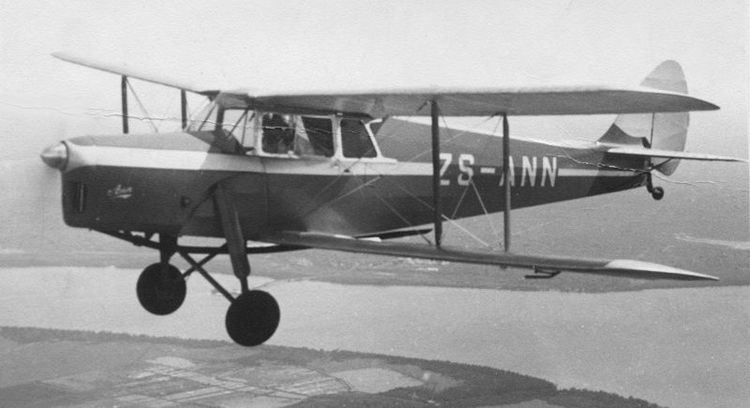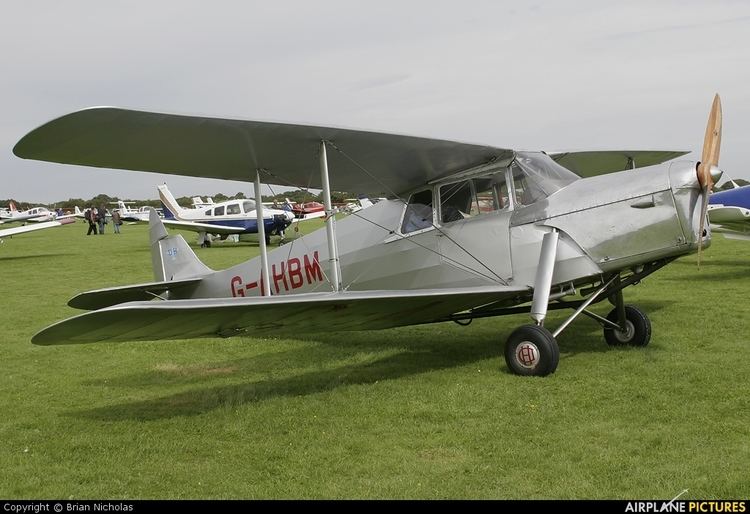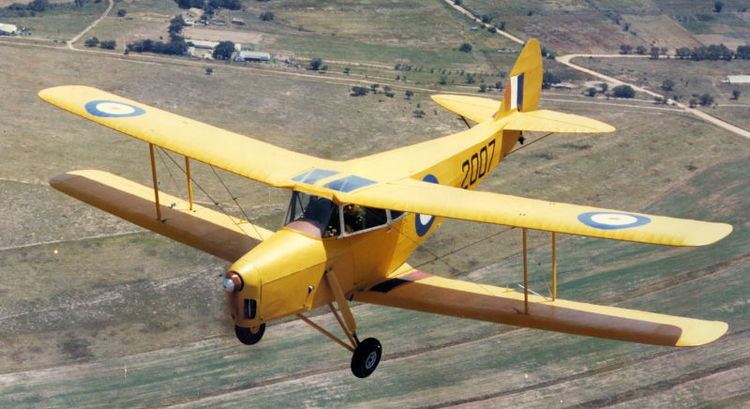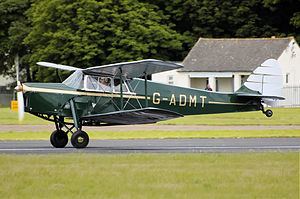Top speed 200 km/h Wingspan 9.73 m Cruise speed 169 km/h First flight May 9, 1934 | Range 1,003 km Length 7.61 m | |
 | ||
De havilland hornet moth g adnd fly past at manchester
The de Havilland DH.87 Hornet Moth is a single-engined cabin biplane designed by the de Havilland Aircraft Company in 1934 as a potential replacement for its highly successful de Havilland Tiger Moth trainer. Although its side-by-side two-seat cabin made it closer in configuration to the modern aircraft that military trainee pilots would later fly, there was no interest from the RAF and the aircraft was put into production for private buyers.
Contents
- De havilland hornet moth g adnd fly past at manchester
- Design and development
- Variants
- Civil charter operators and pilots 19352009
- Military operators
- Specifications DH87B
- In fiction
- References

Design and development

The prototype first flew at Hatfield on 9 May 1934 and, with two other pre-production aircraft, embarked on an extensive test program that resulted in the first production aircraft (designated DH.87A) completed in August 1935 having wings of greater outboard taper. These were found to cause problems, especially when landing in three-point attitude: there was a tendency for the tips to stall, causing embarrassment to the pilot and often damage to the aeroplane. From early 1936, de Havilland offered owners of the DH.87A replacement wings of the new squarer shape at a reduced price in exchange for the original wings. Designated DH.87B, new aircraft from about manufacture Number 68 were built with the new square wings. This wing reduced the overall span by 8 inches (20 cm). The alterations slightly increased overall weight at some penalty to performance.

Production was 164 aircraft, of which 84 were placed on the British Register. Many were impressed for military service during World War II, mostly being used by the RAF as liaison aircraft.

Small numbers survived the war and with time became highly prized by vintage aircraft enthusiasts. A small number are still flying, over seventy years after production ceased.
Variants
Civil charter operators and pilots 1935–2009
Military operators

Specifications (DH.87B)
Data from De Havilland Aircraft since 1909
General characteristics
Performance
In fiction
A Hornet Moth appears in Ken Follett's 2002 suspense novel Hornet Flight. It also appears in Jasper Fforde's 2005 mystery novel The Big Over Easy.
Hornet Moth G-ADUR appears in the movie "The Abominable Dr. Phibes" (1971)
